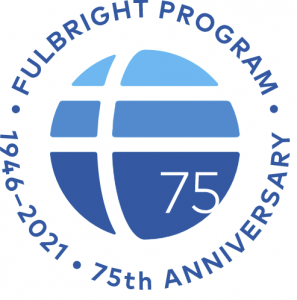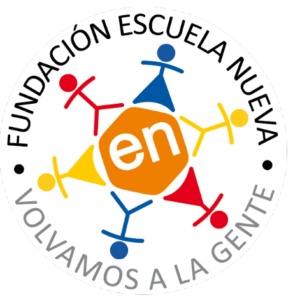Inquiry Project Overview

Justin Hauver
The Fulbright Program

Legislation introduced by Senator J. William Fulbright created the the Fulbright Program in 1946. Coming right after WWII, the program was founded to help realize a vision of (US-led) world peace and cooperation. Money from the sale of surplus WWII weapons and war materials was channeled to the State Department to finance international exchanges of people, ideas, and cultures. Over 400,000 alumni and 75 years later, Congress continues to fund the program’s mission to foster mutual understanding between nations, advance knowledge, and improve lives.
College students, teachers, artists, researchers and other professionals from the US and 160 other countries earn one of the 8,000 Fulbright grants and fellowships awarded each year. These Fulbright recipients crisscross the globe to study, teach, and complete inquiry projects. As representatives of their home countries, Fulbrighters are also expected to engage with their host countries in ways that raise intercultural awareness, humanize international relationships, as well as contribute to “a more peaceful, equitable, prosperous, and just world.” Accordingly, the bonds formed between people are fundamental not only to creation of new understandings, but also to the strengthening of alliances between nations.
Though diversity is clearly foundational to the Fulbright Program, Senator Fulbright himself was a racist who opposed the integration of public spaces and civil rights. The Fulbright Program acknowledges this history on its website and affirms its commitment to working with its partners to promote diversity and inclusion. Still, this background along with worries about the role of the Fulbright Program in the projection of US imperial power are, of course, troubling. However, as an educator, I am used to working within unjust systems. As usual, I will do my best to pursue a better future and to navigate moral dilemmas that arise in my work.
My Inquiry Project
The specific Fulbright fellowship that I applied to is under the Fulbright Distinguished Award in Teaching Research Program. This branch of the Fulbright Program is for teachers interested in pursing research in one of the dozen or so partner nations, including México, Colombia, and Finland. Fellowships can last 4 weeks to 6 months, depending on the exact program. Fellows design and complete an inquiry project, network with other educators, and develop practical tools. It’s a pretty cool opportunity and I highly recommend applying if you are eligible.
Fundación Escuela Nueva

So what exactly am I going to Bogotá to do? Well, the tentative plan is to learn from Colombian educators, refine my Spanish skills, and eat a bunch of arepas. The inquiry project that I outlined in my application involved working with an innovative non-profit called Fundación Escuela Nueva (FEN) in order to learn from their decades of experience cultivating flexible, student-centered learning spaces. FEN was founded in 1987 by the authors of Escuela Nueva, which was a program started in the 70s to improve rural education by providing teachers and students with simple, flexible, and personalized learning tools. Over it’s history, FEN has evolved and grown by iterating, adapting its model to urban settings, and adding new components.
In 2001, FEN designed Escuela Nueva Learning Circles (LCs), a program intended to serve marginalized students in extreme poverty who often have interrupted schooling. With roughly 10% or 5 million Colombians displaced by the last five decades of violence, LCs also meet a critical need by helping many of those children fleeing their homes get resettled in traditional schools. The LCs model is centered on small groups of students working in personalized ways on foundational academic as well as social-emotional skills. The goal is to cultivate the skills and mindsets needed for students to be successful when they transfer to a traditional school after a year or so with FEN. Given its successes with extremely vulnerable populations of students, I am excited to see these learning circles in action.
While the Fulbright program was able to partner me with Escuela Nueva, the ongoing pandemic requires some adjustment to the original research plan of frequent in-person observation, interviews, and close contact. Safety and respect towards those in Colombia and FEN will be top priorities. This might require significant changes to my original plan but I’m grateful to have this opportunity and confident that there will be much to learn from Colombian educators and students, even if a big chunk of that learning comes through a Zoom screen or from socially-distanced, outdoor activities.
Project Outline
Below is a series of questions and answers that I put together after a meeting with leaders from FEN. It outlines the core of my research.
What’s my project? What am I going to research?
- I hope to observe Escuela Nueva’s learning spaces, especially their learning circles, and also get to know educators, students, and other members of the community. From these experiences, I plan to write a few “portraits” or case studies of the program and the people involved in Escuela Nueva.
Why do I want to research Escuela Nueva?
- Escuela Nueva is an organization with a long history in the field of education. I’d like to learn from the accumulated wisdom of its communities. Their learning circles program, which is designed to support students with interrupted education, is particularly interesting in light of worldwide disruptions wrought by the pandemic. Even before COVID-19, many students across the US had gaps in their formal education that were exacerbated by traditional teaching methods. As a flexible, student-centered organization, there are important and relevant insights to be gained by studying Escuela Nueva’s learning circles and other programs.
So what are social science “portraits?”
- Portraiture is a form of social science research akin to ethnography that was largely developed by Dr. Sara Lawrence-Lightfoot. “Portraits” are narratives that describe people and organizations in real contexts with a focus on the goodness of those subjects. The first question researchers ask is, “what is work working well here?” The narratives of portraiture seek out and center that goodness. This doesn’t mean that social science portraits are a false or overly ideal portrayal of their subjects. Instead, portraits try to capture the complicated dynamics of an organization or a person, including dysfunctional or distorted aspects. But the goal is to find and cultivate the good that is always there to be found.
Why do I want to write portraits?
- I believe that portraits have the power to open imaginations and shift mindsets. Like literature, the best portraits help us feel and see the realities of their subjects. These empathy bridges can lead us to new worlds, help us imagine better systems, and push us to think and teach in different, more humane, and more effective ways.